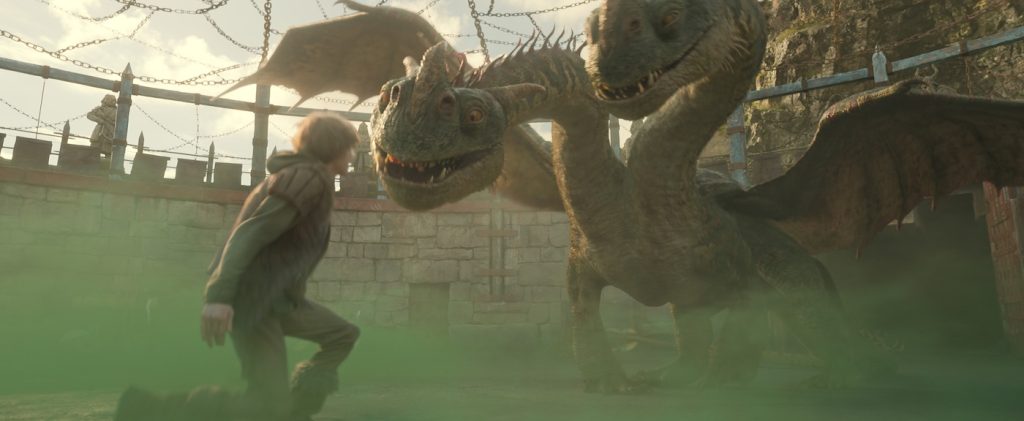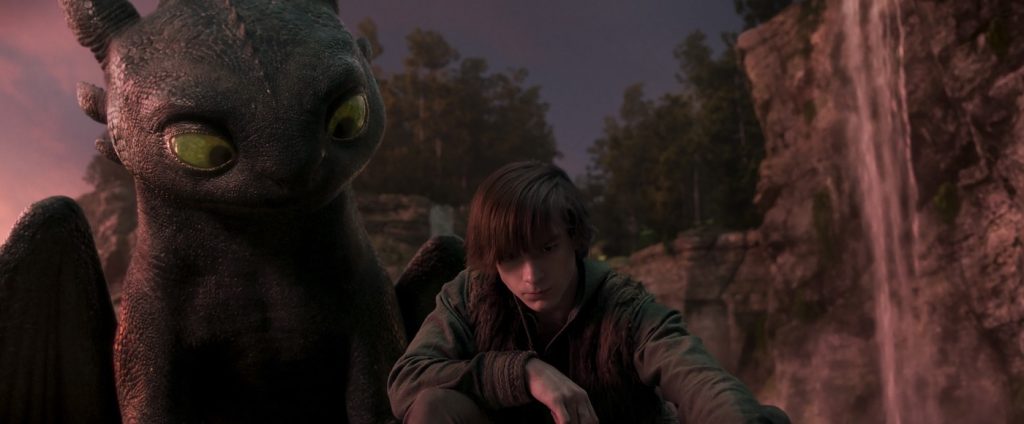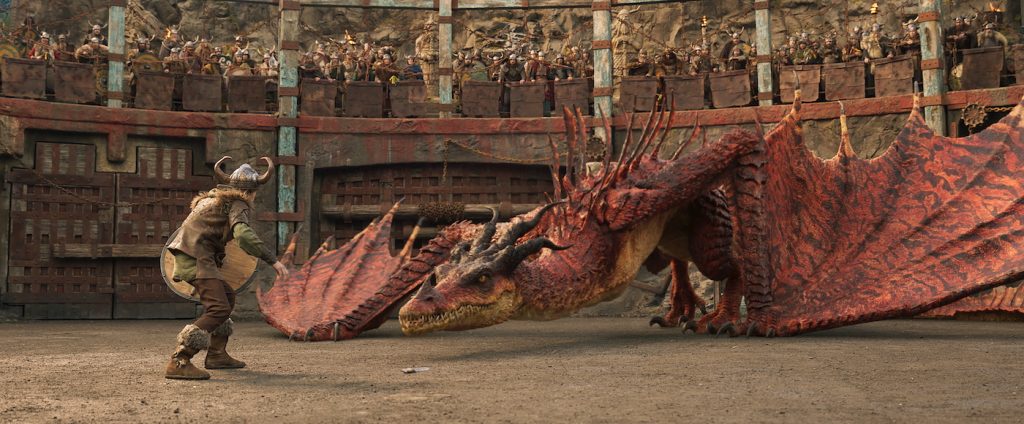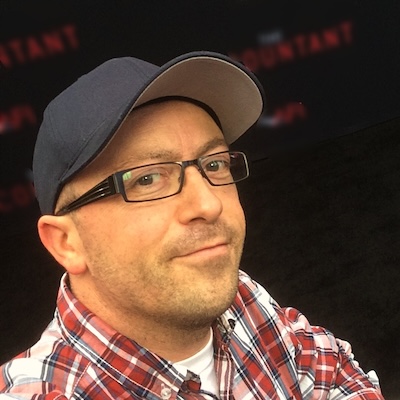Inside Writer/Director Dean DeBlois’ Secret Formula for Creating His Live-Action “How to Train Your Dragon”
When filmmaker Dean DeBlois found out a live-action reimaging of his award-winning animated hit How to Train Your Dragon was on the cards, he volunteered to write and direct it.
The adaptation, which lands in movie theaters on Friday, June 13, 2025, largely mirrors the storyline of the 2010 original. At the heart of the film is the friendship between a young Viking called Hiccup, played by The Black Phone‘s Mason Thames, and Toothless, a Night Fury dragon, who becomes the key to both dragons and humans forging a new future together on the isle of Berk. Original voice cast member Gerard Butler returns as Hiccup’s father, Stoik, the Viking leader.
Here, DeBlois explains why the original films’ composer John Powell was key to the film’s success, how Roger Deakins recommended cinematographer Bill Pope for the project, and why the Game of Thrones crew played a vital role in bringing Berk to life.
What was your initial reaction when they came to you with this idea?
Peter Cramer, the president of production at Universal, approached me and said they were kicking the tires on this idea of How to Train Your Dragon as a live-action film. I’ve been fairly vocal in saying I’m not a big fan of this trend because it diminishes the accomplishment of the animated movies and the hard work that went into them. It often feels like a wasted opportunity to create something new. I also thought that if someone’s going to do it, I don’t want to see someone else’s version of it. I’m very protective of the characters, the world, and the story, so if they were going to do it, I wanted to be the steward.

Does the fact that you recognize the risks make you the perfect guy for the job?
It certainly puts my convictions to the test. I thought that if we approach it through the lens of live action, it offers opportunities to go a little more mature, develop the mythology, and explore richer and deeper character relationships. Also, there are the bells and whistles of live-action as an immersive experience, so we can go into the action scenes knowing we can be more visceral.

What was the cornerstone you needed to have in place for everything else to work?
Our original composer, John Powell. I thought that if he were in, I would have great confidence going forward. He was the first phone call I made, and I just said, “Talk me out of this if you think it’s a bad idea, but I think there could be great promise in all of this.” He came at it from the same angle. He thought fans of our movie have grown up and this is part of their childhood, so naturally they’re going to be quite guarded about it, but if we could deliver something with love, integrity, and respect, but also bring something new to it, it will not only be a nostalgic hug from the past, but it’ll extend the story to all sorts of people who might not have seen the film, including perhaps their kids.
What were the different challenges for you with directing live-action rather than animation?
Much of it is similar, but there is the added intensity of principal photography. You spend a lot of time prepping, designing, and building models of sets, as well as figuring out the choreography. Early on, you try to answer as many questions as possible so that when you arrive on the day and have X number of shots to get done, you’re not thinking about logistics and can focus solely on performance. That was the biggest education, as I thought we had rehearsed and planned for a very specific scene in every case. However, once you have the actors in there and go through the blocking, ideas start popping up. As you work the scene together, a cadence develops, certain lines are no longer needed, and a new line is required; it’s all about the pauses, silences, and mannerisms. Thanks to Bill Pope, our cinematographer, I found myself very focused on the truth of the performances and doing my best to ignore the 300 people standing around, adjusting lights and moving grip equipment. I was very focused on getting that truthful interaction because it was going to make or break the movie.
Bill Pope is one of the best. Does his involvement give the film more gravitas?
Absolutely. The second phone call I made was to Roger Deakins because we had worked with him on all three animated movies. Having just come off Blade Runner 2049, he said, “I don’t want to do any big effects movies for a while, but I know just the guy to introduce you to,” and he made the call to Bill Pope. Bill jokes that he did what everyone does when Roger Deakins calls, and that is, he did what he told me to do. Roger recommended Bill because he knew how strong a storyteller he is. Aside from just having a great eye and great ideas for light and composition, Bill is primarily focused on the truth that comes through with the actors. He has a strong, intuitive respect for stories, and that always comes first.

You shot this in Belfast, Northern Ireland, and there’s a lot of location work. How much did that real-world influence what you were doing?
We did a location scout in the very beginning. We gathered our producers, Bill Pope, and our visual effects supervisor, Christian Manz. We piled into helicopters to fly around the coasts and canyons of Iceland, the Faroe Islands, and the Isle of Skye, cherry-picking our favorite locations, sea stacks, and coastlines. That was instrumental in establishing the scope of the movie, as everything is grand, larger than life, and sculpted in such an ethereal way that it gave us a sense of the breadth of what the movie could be. When we started designing our locations and figuring out which parts of those three places to incorporate into the world of Berk, it came with a certain exotic yet grounded quality. That became a defining factor in shaping the world as we know it. We were circling that part of the map and saying, “Berk is somewhere in here.” The island of Berk is a real island in the Faroe Islands called Tindhólmur. It’s smaller, but we scaled it up for our purposes. It’s the same proportions, though.
Those areas have incredible local talent who have worked on epic productions from Game of Thrones to Star Wars.
We basically employed the Game of Thrones team. They’re skilled, incredibly passionate, and always go above and beyond whatever task is assigned to them. I found myself walking into the sets, marveling at the extra details we hadn’t even talked about. They put them in because they care so much about what they’re doing. The builders, sculptors, and craftspeople create a whole other level of grounded reality with whimsy and character. I was blown away. There was a sense of respect among all the disciplines and a great deal of appreciation.

The costume design is incredible. In that part of the world, you have access to local talent, as well as teams in London who understand both the theatrical and the transition to the cinematic. Did you utilize that as well?
Our costume designer, Lindsay Pugh, pulled from all of the available costumers in Belfast and beyond. Several individuals had traveled from London and other parts of the UK to work on the film. It was a huge department. I don’t know the number of pieces they made, but everything was done with incredible skill and attention to detail. It all feels well-worn and manages to capture the silhouettes of each of our characters in a way that pays homage to the animated movie without copying it.

Berk is now one of the worlds at Universal Epic Universe in Orlando, Florida. Did you ever imagine this IP evolving in this way?
It’s very surreal to me. I had no idea it would travel this far into the zeitgeist. To become a theme park is such a rare privilege. I remember working on Mulan for Disney, and at the time, we would joke amongst ourselves that the measure of success was whether you got a Disney on Ice show. When Mulan was getting a Disney on Ice show, we thought, “Oh, we made it.” That has changed. Now, if you have a theme park world based on your film, you’ve really managed to penetrate pop culture.

How to Train Your Dragon soars into theaters on June 13.
Featured image: (from left) Hiccup (Mason Thames) and Night Fury dragon, Toothless, in Universal Pictures’ live-action How to Train Your Dragon, written and directed by Dean DeBlois.



